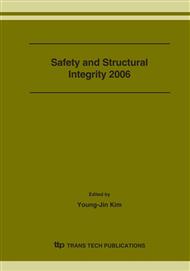p.113
p.119
p.129
p.135
p.141
p.147
p.157
p.163
p.169
Analysis of Thermal Stress and Flow Characteristics in a Bellows-Seal Valve for the Reliability Establishment
Abstract:
Because of design and manufacturing costs, it is important to predict an expected life of bellows with component stresses of bellows as its design factors and material characteristics. Besides, if the reliability of the bellows in a bellows-seal valve is not properly assessed, leakage would be occurred easily before the expected life of the bellows. In this study, numerical analyses are carried out to elucidate the thermal and flow characteristics with bellows-seal globe valve for high temperature and for high pressure conditions using FSI (Fluid-Structural Interaction) technique. Thermal stress affecting bellows life is depicted with its axial displacement to assess the reliability of the bellows. In addition, we made a basic fuzzy algorithm to add new design parameter. As the result of this study, we got the reasonable coefficients for valve and thermal stress for bellows, compared with existing coefficients and calculated values. Also, since the maximum thermal stress of the bellows is below a general yield stress of used material, the reliability of the bellows is established.
Info:
Periodical:
Pages:
141-146
Citation:
Online since:
February 2007
Authors:
Price:
Сopyright:
© 2007 Trans Tech Publications Ltd. All Rights Reserved
Share:
Citation:


